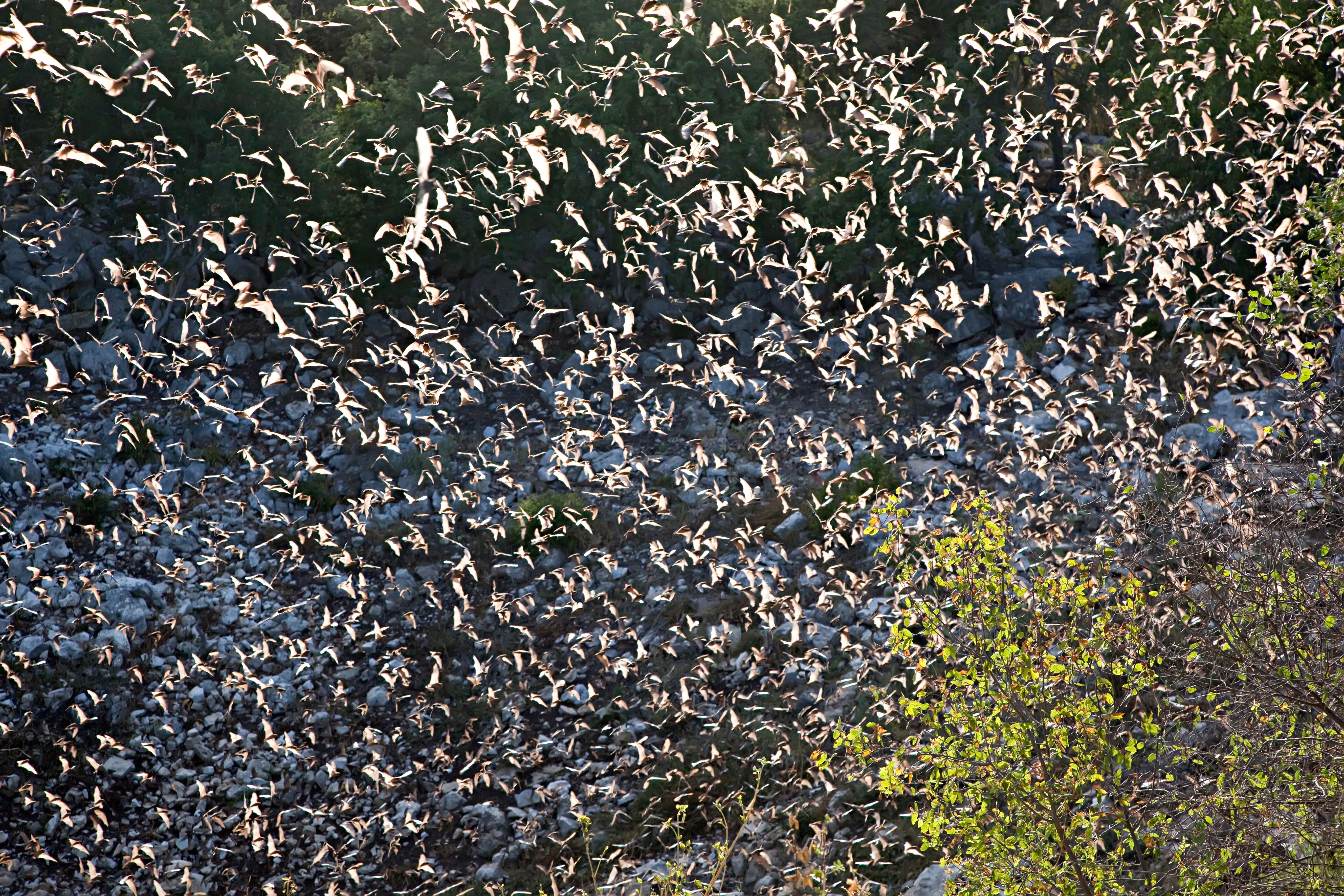
Birds of a feather flock together. And so do bats and fishes and any little critter hoping that getting lost in the crowd will keep them off the evening menu. But predators gotta eat. So they, in turn, have come up with clever ways to cut through the visual clutter of a churning mass of panicked prey to hone in on their target.
For hawks who forage in massive swarms of bats, the trick, it seems, is to just dive in and grab whatever hapless flier happens to share your trajectory. That’s according to a study in the journal Nature Communications.
Graham Taylor: Intercepting even a single maneuvering target is a challenging task in itself.
Hopkin: Graham Taylor is a professor of mathematical biology at the University of Oxford. He got to wondering how predators like hawks and falcons manage to isolate and intercept a moving target when it’s part of a flock or a swarm…a dense aggregation that seems like it would offer optimal protection for the prey.
Taylor: For one thing it can reduce your individual risk of coming under attack in the first place. And it might also make it harder for a predator to catch you if it initiates an attack at all.
Hopkin: That’s thanks to the so-called “confusion effect.”
Taylor: Which is the idea that the presence of multiple similar targets makes it harder for a predator to single out and track any one individual.
Hopkin: But are swarms as confusing to a hawk as they might seem to you or me? To find out, Taylor teamed up with Laura Kloepper, a bat biologist at Saint Mary’s College in Indiana, and headed to New Mexico.
Taylor: It’s a very remote location in the Chihuahuan desert where there’s a bat cave from which every evening close on a million Mexican free-tailed bats emerge. And waiting for the bats as they emerge in this huge stream that pours out of the cave are a number of Swainson’s hawks, which plunge into the swarm and try and grab bats from it.
Hopkin: So Taylor and his team positioned video cameras strategically around the cave. And that found that…from the bat’s point of view…swarming did, indeed, reduce a given individual’s risk of being nabbed.
Taylor: But what we also found was that the hawks were no less successful at catching bats that were flying in the swarm than they were at catching lone bats. What that suggests then is that the hawks are not suffering from any kind of confusion effect.
Hopkin: But how do the hawks avoid getting visually disoriented when they’re trying to snag a single bat from a sea of erratically flapping wings? To find out, the researchers compared the trajectories of both predator and prey. And they saw that attacking a swarm requires a different strategy than stalking an isolated individual.
Taylor: If you analyze the way in which a hawk chases after a single target, it really closely follows the twists and turns that the target makes as it tries to evade the hawk.
Hopkin: But not so when you’re going for the swarm.
Taylor: Instead, the best model of the data was one that said that the hawks simply turned on a constant radius into the swarm, or perhaps more generally were targeting a fixed point in the swarm.
Hopkin: While steering toward this fixed point, the hawk can then reach out with its talons and scoop up any bat that’s flying along the same path. And because they share the same trajectory, the bat will look to the hawk like it’s not moving at all.
Taylor: The part of the swarm that the hawk is headed for is gonna appear effectively stationary compared to the movement of the rest of the swarm. So this provides a mechanism whereby it’s possible for the bird plunging into the swarm to be able to identify which bit it’s gonna hit, but then also to be able to single out a target within that without having to suffer from the confusion effect.
Hopkin: Taylor says the same should hold true for other predators that hunt prey in large flocks or shoals or murmurations. But for now we can safely say that, for Swainson’s hawks, the chaos of the swarm doesn’t seem to make their heads spin…even though it’s totally batty.
For Scientific American’s 60-Second Science, I’m Karen Hopkin.
[The above text is a transcript of this podcast.]
